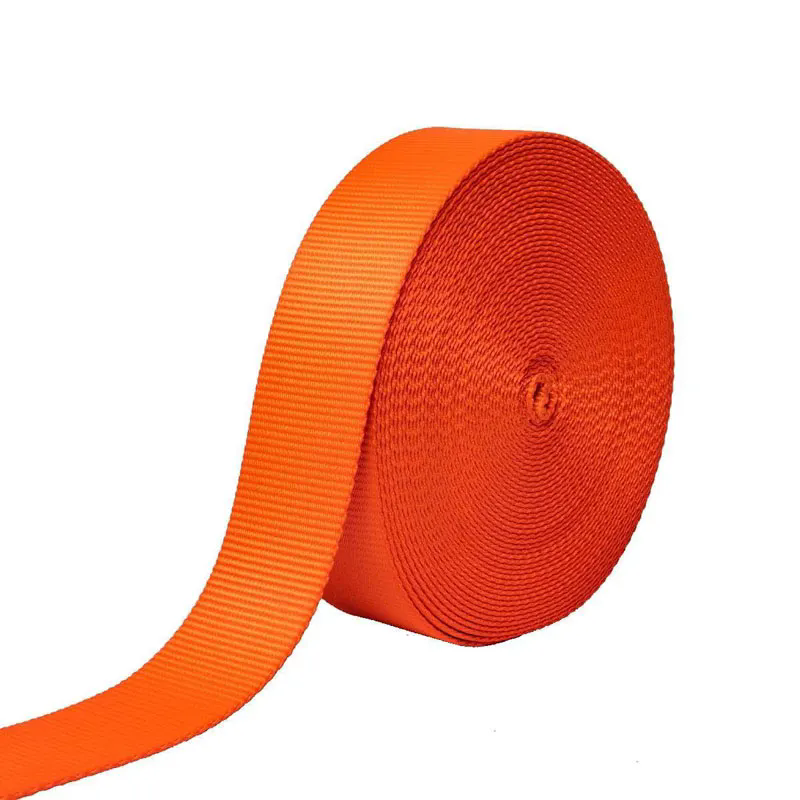Advantages and Applications of Polyester Webbing
2024-08-02
Polyester webbing is a type of durable, woven fabric commonly used in a variety of applications due to its strength, flexibility, and resistance to environmental factors. Here’s a comprehensive overview of polyester webbing:
Key Features
1. Material Characteristics
- Composition: Made from polyester fibers, which provide high tensile strength and durability.
- Weave Patterns: Can be woven in various patterns, such as plain weave, twill weave, or braided, to meet different performance requirements.
2. Strength and Durability
- High Tensile Strength: Polyester webbing is known for its strong load-bearing capacity, making it suitable for heavy-duty applications.
- Abrasion Resistance: Resistant to wear and tear, which extends the life of the webbing even in rugged environments.
- UV Resistance: Generally resistant to ultraviolet (UV) rays, reducing degradation from sunlight exposure.
3. Flexibility and Comfort
- Flexibility: Maintains flexibility and ease of handling, which makes it ideal for applications requiring a balance between strength and comfort.
- Comfort: Often used in products like belts, harnesses, and straps where comfort against the skin is important.
4. Environmental Resistance
- Water Resistance: Polyester webbing does not absorb water easily, making it suitable for use in wet conditions.
- Chemical Resistance: Generally resistant to many chemicals, though it may degrade over time when exposed to harsh chemicals.
5. Color and Coating Options
- Variety of Colors: Available in a wide range of colors, allowing for customization and aesthetic preferences.
- Coatings: Can be coated or treated for additional properties such as waterproofing or enhanced grip.
Advantages
1. Strength and Reliability
- Load-Bearing: Capable of supporting heavy loads, making it suitable for applications like lifting, towing, and securing.
- Durability: Long-lasting and resistant to environmental stressors, reducing the need for frequent replacements.
2. Versatility
- Wide Range of Uses: Used in various industries and applications, including outdoor gear, automotive, construction, and safety equipment.
- Customizable: Can be tailored to specific requirements, such as width, thickness, and color, to meet diverse needs.
3. Ease of Maintenance
- Low Maintenance: Easy to clean and maintain, often requiring only routine washing or wiping to keep it in good condition.
Applications
1. Outdoor Gear
- Backpacks and Bags: Used for straps and belts due to its strength and durability.
- Camping Equipment: Found in tents, hammocks, and other gear requiring strong and reliable webbing.
2. Safety and Restraint Systems
- Harnesses and Safety Belts: Used in harnesses, seat belts, and other safety equipment where strength and reliability are crucial.
- Straps and Tie-Downs: Employed for securing loads and equipment in transportation and industrial applications.
3. Automotive
- Seat Belts: Utilized in seat belt webbing for vehicles due to its strength and safety features.
- Cargo Straps: Used to secure cargo in trucks and trailers, ensuring stability during transport.
4. Construction and Industry
- Lifting Straps: Applied in lifting and rigging operations where strength and durability are essential.
- Safety Netting: Can be used in safety nets and other protective gear to ensure safety in construction and industrial environments.
Considerations
1. Load Requirements
- Weight Capacity: Ensure the webbing is rated for the intended load and application to prevent failure.
2. Environmental Conditions
- Exposure: Consider environmental factors such as UV exposure, moisture, and chemicals when selecting polyester webbing.
3. Maintenance and Care
- Cleaning: Follow manufacturer guidelines for cleaning and maintaining the webbing to ensure longevity and performance.
Summary
Polyester webbing is a versatile, durable material used across various applications due to its strength, flexibility, and resistance to environmental factors. Its wide range of uses, from outdoor gear and safety equipment to automotive and construction applications, makes it a valuable component in many industries. By choosing the appropriate type and specifications of polyester webbing, users can ensure optimal performance and reliability for their specific needs.



